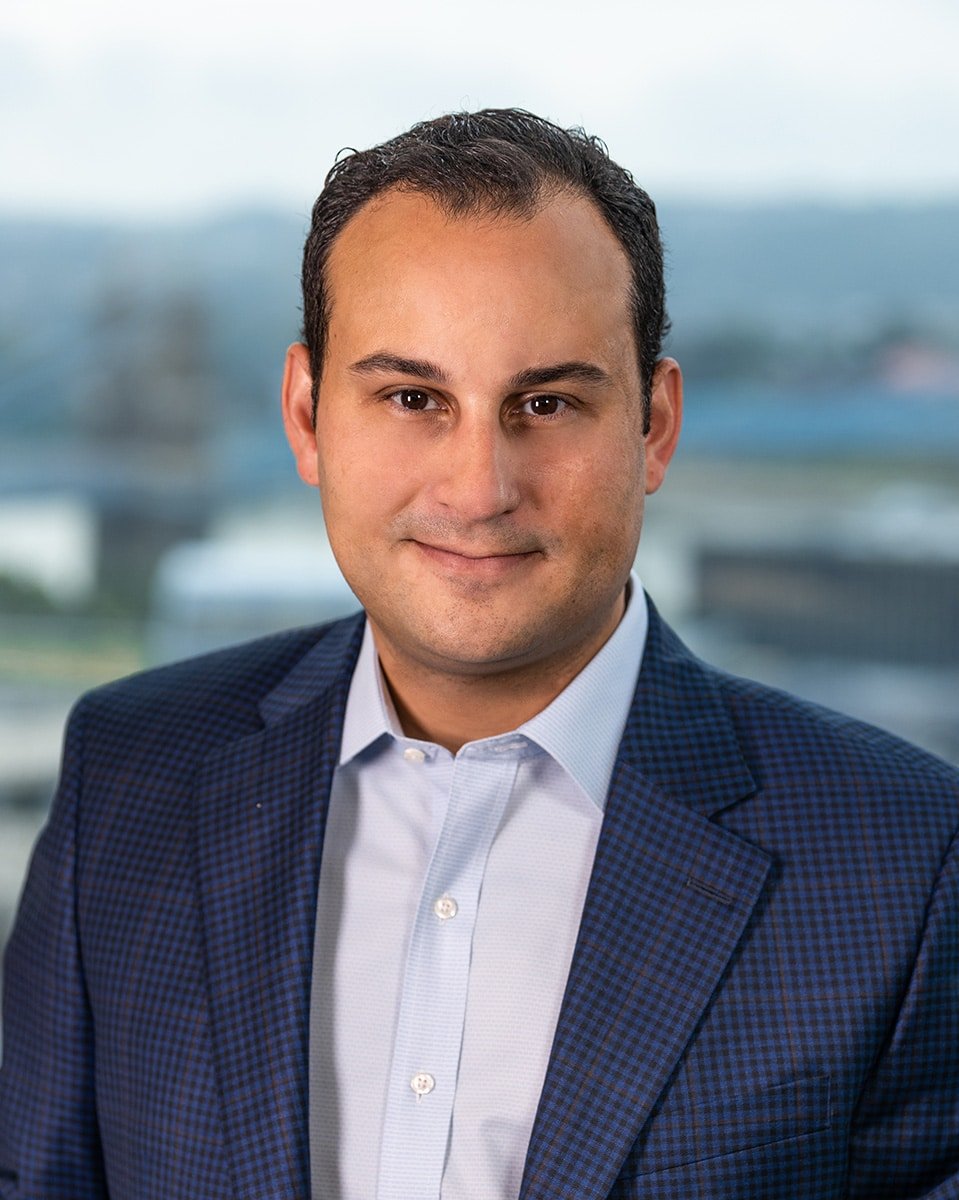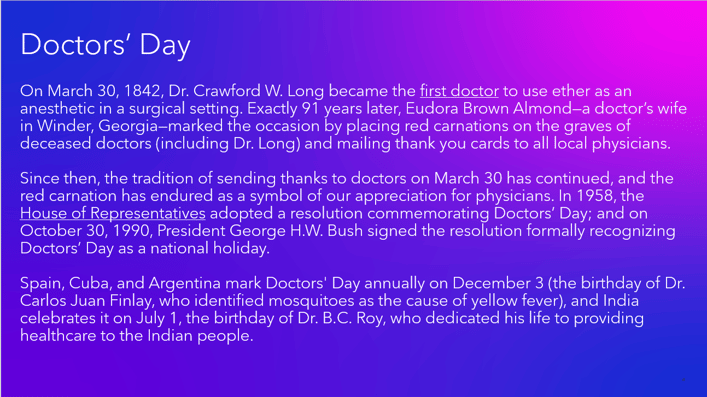Use Technology In 5 Ways to Ease Administrative Burden This Doctors’ Day


March 30 is Doctors’ Day, marked annually to recognize these dedicated professionals who apply their expertise and continuous training to make pivotal decisions that heal, save lives, and ultimately improve healthcare. They work long hours sacrificing time with loved ones, often putting their own well being at risk for others.
And in the wake of the ongoing pandemic, physicians’ patient loads are growing and patients’ acuity levels are increasing. The sicker patients presenting are the result of years-long disruptions in care, adding to physicians’ clinical caseloads. On top of patient care, the average doctor spends nine hours per week (16.6% of working hours) on administrative work, according to one study of nearly 5,000 physicians.
Labeling our physicians as heroes doesn’t help them—but making concrete improvements to healthcare operations and administration can.
In honor of Doctors’ Day, we present ways healthcare leaders can support physicians, especially where technology is involved.
How advanced technology supports doctors and physician leaders
Eudora Brown Almond (see sidebar) had the right idea when it came to recognizing doctors for their tireless efforts and dedication to practicing medicine. But recognition is only part of a healthcare organization’s responsibility to providers. The best way for healthcare leaders to support doctors is to relieve operational and administrative burdens to the extent possible, so providers can focus on patient care, research, committee work, and quality improvement that improves medicine.
The right tools and technology solutions help physicians deliver patient care safely and efficiently, which leads to better patient outcomes, less stress among staff, and improved job satisfaction. Here are just a few ways advanced technology solutions can support your doctors and physician leaders.
1. Use technology to help stave off burnout
A June 2019 study in Annals of Internal Medicine calculated that physician burnout costs the healthcare industry $4.6 billion per year. This is a pre-COVID figure that will almost certainly rise as we calculate the effects of the pandemic on the healthcare industry.
For doctors, stress is a part of the job. And while some stress is normal and even a healthy human response, the law of diminishing returns applies: If the stress is too severe or persists for too long, any benefits it may provide are undone. On a long enough timeline, the type of stress healthcare workers experience daily can quickly turn to burnout. The results are damaging and range from a reduced sense of personal accomplishment and emotional exhaustion, to depersonalization, depression, and suicide.
Even before COVID-19, healthcare leaders sought ways to minimize burnout rates and avoid costly and dangerous medical errors, and the pandemic has underscored the urgency of this need. We have previously discussed ways healthcare organizations can help ease the strain on providers and staff and minimize burnout, and there are additional structural and system-wide steps leaders can take to tackle this problem head on.
An effective workforce management strategy is a valuable tool for early identification of symptoms of burnout and fighting burnout. Having the right resources in the right places can help providers do their jobs more efficiently and more effectively, thereby removing some of the stress and potentially minimizing burnout rates.
The pandemic also demonstrated the importance of ensuring providers and staff feel safe at work, especially in terms of PPE and organizational adherence to disease-prevention protocols. Supply chain management and visitor management play critical roles in creating a safe and minimally stressful environment for staff and providers.
2. Support doctors as leaders of team-based care
Healthcare has evolved to a team-based approach, and thus the roles of physicians, nurses, and support staff are complex and specialized. The approach requires flawless communication among multiple professionals who work shifts at different times and perhaps even across different locations. Every patient care team member requires access to updated information during treatment to avoid undesirable outcomes. As a result, there’s opportunity for hospitals and healthcare organizations to support their clinical workforce with a comprehensive clinical communications system.
According to The Joint Commission’s Center for Transforming Healthcare, patient handoffs are a uniquely vulnerable moment in provider-to-provider communication. The Joint Commission estimates that 80% of serious errors occur because of communication failures during patient handoffs. Providing caregivers with accurate, real-time information can help mitigate the risk of errors during shift changes, patient transfers, and the like.
Critical information in hospitals is delivered not only person-to-person via text messages and phone calls, but is also sourced from the electronic health record (EHR) and multiple clinical systems, including those for laboratory information, picture archiving and communication, nurse call, and medical devices. Technology unifies clinical communications from all of these systems on a mobile app so that no detail is ever left unread, unsent, or delayed.

3. Use electronic peer review to drive clinical improvement
Provider burnout isn’t the only risk associated with overworked physicians. Patient safety and clinical outcomes directly suffer as a result, too. Unfortunately, attitudes toward peer review and performance improvement initiatives are still tainted by historical views of the processes as negative/punitive in nature, derived from morbidity and mortality programs. Historically, clinical peer review was used to determine the quality of care a provider already delivered—or was set in motion by malpractice suits, Sentinel Events, or incidents/adverse events.
As a lingering result, a primary quality improvement challenge is doctors’ lack of participation in and/or disconnection with such initiatives. In addition, many health systems still experience difficulties in recruiting physician reviewers, forcing some to rely on expensive external peer review when it’s not needed.
Today peer review is completed retrospectively and concurrently with the provision of care, and is intended to foster constructive performance improvement within a fair, efficient, and reliable process that aids, not hinders, providers’ professional growth. Technology reinforces these goals, creating electronic workflows that streamline the process and ensure that no one circumvents written policies and procedures. Finally, the shift to digital review processes gives providers and reviewers the ability to participate from anywhere on their schedules, giving them much needed time back as compared with in-person meetings using manual and paper processes.
Whether the action plans that result from reviews identify positive contributions or improvement opportunities, digital peer review enables providers to own the process and engage in ways never considered before. symplr Quality helps health systems to implement high-quality review processes. And by making the peer review system more efficient, doctors and physician leaders can focus on the data that improves the quality of clinical care and patient outcomes.
4. Create a digital hub to easily match doctors and patients
The patient experience is a pivotal part of a healthcare organization’s operations: Satisfied patients benefit the organization’s clinical, financial, research, and other missions—and also make doctors’ jobs easier. A key driver of patient satisfaction and patient experience today is ensuring that the patient feels like they’re in control of their care. Control comes from their ability to find a physician or specialist they’re comfortable with, who is in-network, accepting patients, and with whom they can easily schedule an appointment online.
A provider directory software program gives patients heightened control over their care to drive satisfaction, without placing an unnecessary burden on clinicians or administrative staff. Such a digital, central provider data hub allows patients to easily search for and schedule appointments with the provider best suited to their needs, and gives patient-access teams best-in-class provider search and scheduling capabilities that support physicians.
5. Implement a single source of truth for doctors’ own practice data
When there is no single source of truth for a physician’s own practice data, the time required for doctors to manage information about their practice for performance improvement, reappointment, and privileging spirals. In addition, communication breakdowns can occur between providers and healthcare leaders and present in many ways, such as:
- Compliance issues (e.g., lack of knowledge about a sanctioned provider)
- Disconnections with payers, affecting reimbursement (e.g., a contract is lacking)
- Clouded visibility into the system locations where a provider has privileges to practice
- Inaccurate or missing doctor directory profiles, causing delays or disruptions to patient care and inviting CMS fines
The average physician’s workload has increased significantly over the years. A recent survey found that one in two physicians works at least 60 hours a week, which puts them at an increased risk of burnout and can have a negative impact on their job satisfaction. Healthcare leaders must reduce the administrative burden on their physicians wherever possible, and effective provider data management can help keep doctors apprised of their practice data and patterns of note. When implemented properly, provider data management software serves as a single source of truth for a doctor’s own practice data while ensuring that the healthcare organization optimizes its provider data systemwide for use in EHRs, on web sites, and in revenue cycle systems.
Celebrating those who lead fellow doctors
To paraphrase an old saying, it takes a village to foster the right environment for your organization’s physicians. Doctors’ Day is more than just a celebration of physicians on the front lines; it’s also a celebration of the physicians who lead their colleagues within healthcare organizations: Chief Medical Officers, Chief Medical Information Officers, Vice Presidents of Medical Affairs, department chairs or chiefs, and committee participants.
While often these roles aren’t patient-facing, they’re vital to ensuring healthcare organizations provide high-quality patient care and supporting physicians. CMOs help set the direction for the clinical staff, while CMIOs serve as a valuable bridge between the CMO and the organization’s IT department and ensure operational efficiency and that all physicians on staff are well-positioned for success. VPMAs and department chairs or chiefs work closely with doctors to provide guidance and support, and committee participants help ensure that physicians continue to learn and grow in their roles.
Let’s celebrate the healthcare professionals who step up into physician leadership positions to guide their medical staffs in meeting today’s healthcare challenges.
To learn more about how symplr’s software solutions can help reduce the strain on your organization’s doctors and encourage a culture of employee engagement from which all clinical staff can benefit, request a demo today.